Anyone who owns a dog or is about to get one, should take the initiative to dog-proofing their home. After all, you want your canine companion to be able to roam and explore its surroundings freely and safely.
In this article, we’ll discuss the tips for creating a pooch-friendly space in your home.So, without further ado, let’s explore these practical tips for creating a haven for your dog!
Dog-Proofing Your Home – Room By Room Guide
1. Kibble & Kitchen Safety: Dog-Proofing Your Cooking Space
Dogs have an instinct for scavenging, which stems from their survival instincts. Unfortunately, the kitchen often contains many items that can be harmful to dogs. To prevent accidental ingestions or injuries, it’s crucial to ensure these potentially harmful items are correctly stored and kept inaccessible to your dog.
- Secure Medications: Store all medications in locked cabinets or on high, secure shelves that are unreachable by your dog. This prevents accidental ingestion of potentially dangerous substances.
- Manage Food: Keep all food off countertops and store it in containers with tightly closed lids. This prevents your dog from scavenging and consuming toxic or harmful foods.
- Use Child-proof Latches: Install child-proof latches on low cabinets to restrict access to cleaning supplies, chemicals, or other hazardous items that could harm your dog’s health.
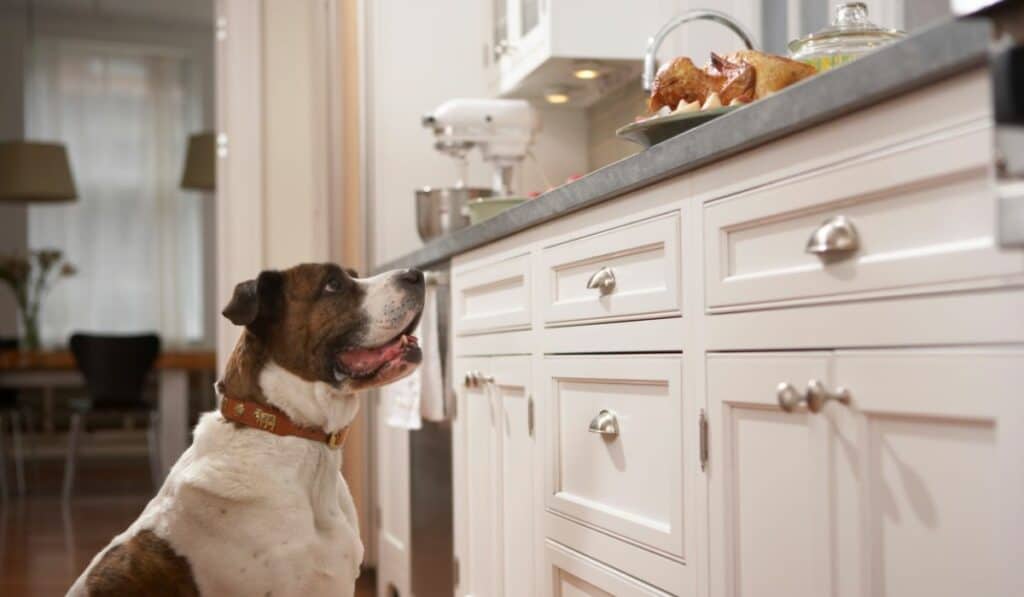
- Secure Garbage: Use pet-safe trash containers with locking lids operated via a pedal mechanism. This prevents your dog from rummaging through the garbage and consuming harmful substances.
- Install Gates: Install baby or pet gates to block off access to the kitchen. Alternatively, you can install portable dog fences to limit kitchen access when necessary, especially during meal preparation or when you cannot supervise your dog closely.
By taking these precautions, you minimize the likelihood of food-related hazards that endanger your beloved canine companion.
2. Paws-itive Living: Dog-Proofing Your Living Room
Creating a safe and dog-friendly living area involves making essential adjustments to specific items within the space. Some common areas of concern that can pose risks to your dog’s safety include:
- Electrical Cords: Dogs may be tempted to chew on electrical cords, leading to injuries. Use cord covers or organizers to conceal cables. Alternatively, secure cords along baseboards or behind furniture to prevent access.
- Fireplaces: Fireplaces can be hazardous for dogs due to open flames and hot surfaces. Use a fireplace screen to block access and prevent your dog from getting too close. Avoid leaving your dog unsupervised near the fireplace, especially when it’s in use.
- Windows: Dogs may try to jump through open windows or screens, risking injury or escape. Keep windows securely closed or use window guards to prevent accidents. Be cautious with window treatments like blinds or curtains with cords, which can also be hazardous.
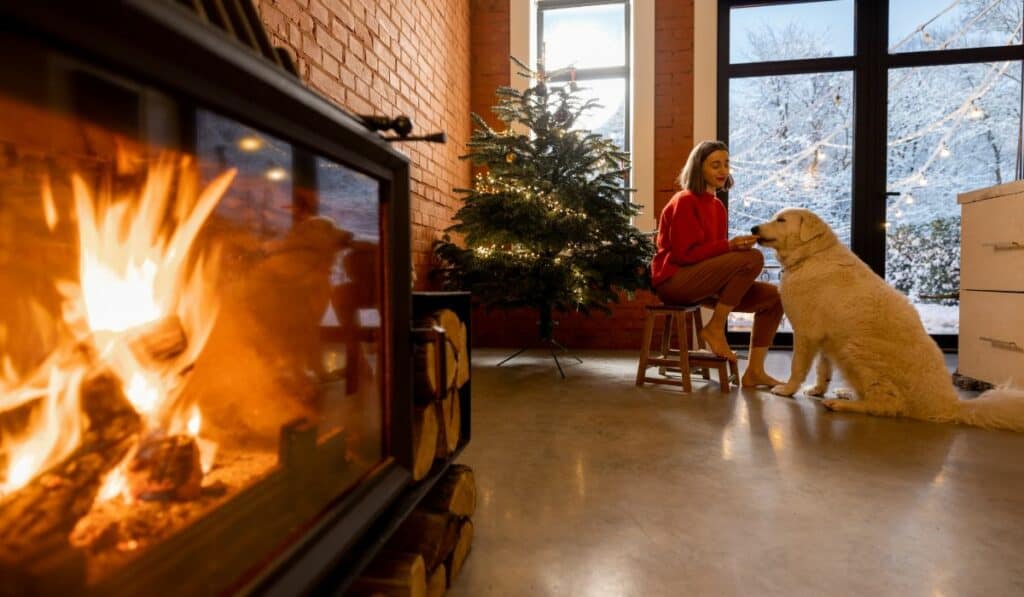
- Reclining Chairs:Dogs can get caught or injured by moving parts of reclining chairs. Always check for your dog’s presence before operating a recliner, and discourage your dog from napping underneath or behind them.
- Plants: Make sure your indoor plants are safe for dogs. Many common houseplants can be toxic if ingested by dogs. Keep these plants out of reach, or consider placing them in areas that inaccessible by your dog.
- Breakable Items and Decor: Put away breakable items such as vases, decorative pieces, or fragile decor from coffee and end tables. Dogs can accidentally knock these items over and injure themselves.
- Small Toys:Store small toys like puzzle pieces or Legos in bins with lids. If swallowed, these items pose a choking hazard or can cause digestive issues.
By regularly inspecting these potential hazards and making necessary adjustments, you can create a safer environment for your dog in the living area.
3. Paw-fecting the Potty Place: Dog-Proofing Your Bathroom
Bathrooms can be enticing places for dogs to explore due to the variety of intriguing smells, accessible items resembling toys, and available water sources.For this reason, it’s crucial to ensure their safety in this area.
- Keep Cabinets Closed and Doors Shut: Prevent access to potentially harmful items by keeping bathroom cabinets closed and the door shut when not in use. This helps manage your dog’s curiosity and keeps them out of trouble.
- Close the Toilet Lid and Consider a Seat-Lock: Keep the toilet lid closed at all times to prevent your dog from drinking or playing in the toilet water, which may contain harmful bacteria or cleaning chemicals. Installing a seat-lock can provide added security.
- Secure Trash Cans:Store trash cans inside cabinets or use pet-safe containers with secure lids to prevent your dog from scavenging through trash and ingesting harmful substances.
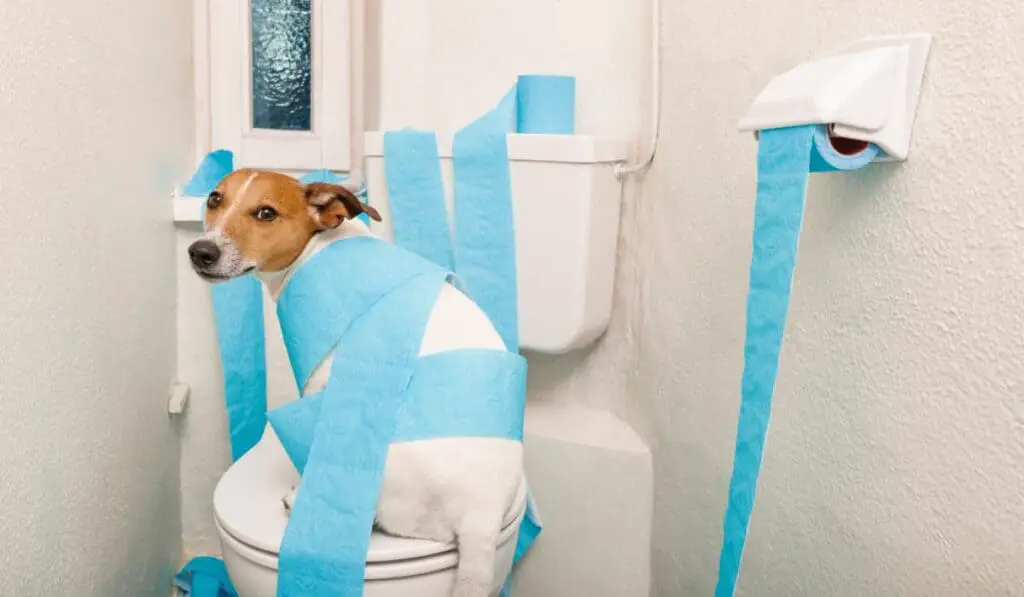
- Remove Bath Toys and Accessories: Keep bath toys, loofahs, sponges, and other small items out of reach, or store them away when not in use to prevent your dog from chewing on or ingesting them.
- Handle Heated Styling Tools Safely: Never leave heated styling tools like curling irons or hair dryers unattended on counters. Always unplug and safely store these items after use to avoid accidental burns or injuries.
- Secure Toilet Paper Rolls: Store toilet paper rolls in containers or use a roll protector to prevent your dog from unraveling or ingesting toilet paper, which can lead to digestive issues.
While dogs’ curiosity in the bathroom is natural, it’s essential to take precautions to ensure their safety. By dog-proofing the bathroom and keeping potentially hazardous items out of reach, you can create a safe environment that minimizes the risk of accidents or ingestions.
4. Safe Paws: Dog-Proofing Your Yard
Backyard spaces offer wonderful opportunities for our canine companions to play and enjoy the outdoors. Whether you use a doggie door for quick potty breaks or allow your dog free access to the yard, you must take proactive steps to dog-proof the outdoor space.
- Pet-Safe Plants: Some plants can be toxic to dogs if ingested, so it’s crucial to identify and remove them from your yard. Common examples of toxic plants include azaleas, oleander, and sago palms. Replace them with pet-friendly alternatives like spider plants, Boston ferns, or bamboo palms.
- Store Lawn Equipment and Tools: Store all lawn equipment, gardening tools, and other sharp objects in a secure location, such as a shed or garage, where your dog cannot access them.
- Check and Repair Fencing: Inspect your fence regularly for any signs of damage, such as holes, loose posts, or gaps that your dog could use as an escape route. Repair or reinforce the fence as needed. Ensure the fence is tall enough to prevent your dog from jumping over it.
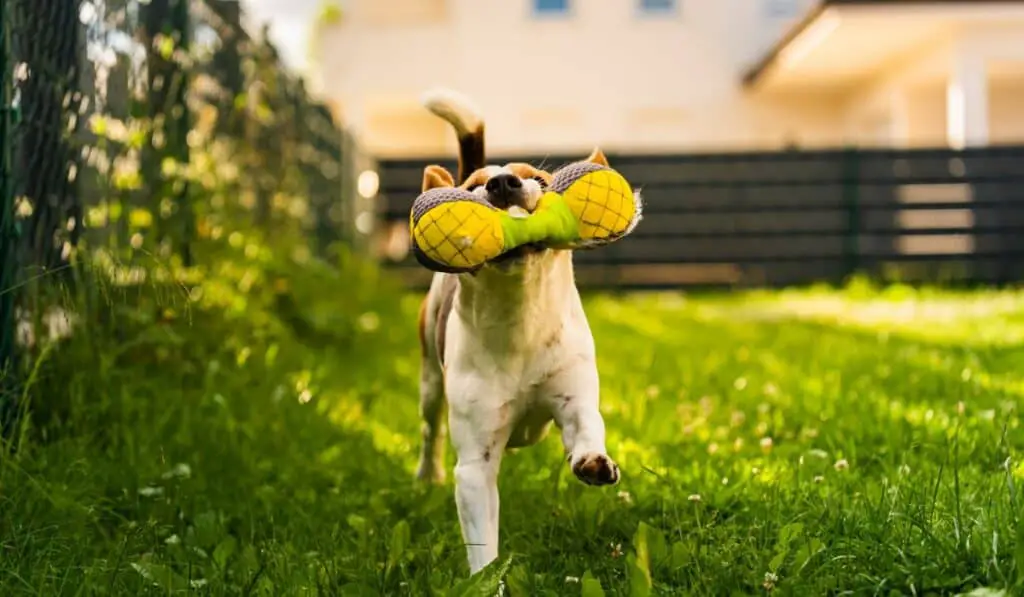
- Block Access to Elevated Areas: Dogs can be curious and may attempt to climb onto balconies, high steps, or elevated platforms. Use barriers such as gates or fences to block access to these areas and keep your dog safe on ground level.
- Secure Swimming Pool Access:If you have a swimming pool, it’s essential to prevent your dog from accessing it unsupervised. Use pool covers, fencing, or safety gates to block all access points to the pool area. Teach your dog to exit the pool safely if they accidentally fall in, and never leave them unattended near the pool.
Regularly monitoring and maintaining these safety precautions help minimize risks and ensure your dog’s well-being outdoors. Remember that supervision is key, and never leave your dog unattended in the backyard.
5. Paw Patrol: Dog-Proofing Your Laundry Room
Laundry rooms can be filled with potential hazards for curious canines. From cleaning products to tempting items like clothing and dryer sheets, it’s important to take proactive steps to ensure your dog’s safety in this space.
- Secure Storage for Cleaners: Store all cleaning products in secure closets or high on shelves where your dog cannot access them. Use child-proof locks or latches if needed to prevent curious noses from getting into potentially harmful substances.
- Keep Laundry Off the Floor: Keep clothing, towels, and undergarments off the floor and out of your dog’s reach. Picking up laundry items prevents chewing or ingestion, reducing the risk of choking or digestive issues.
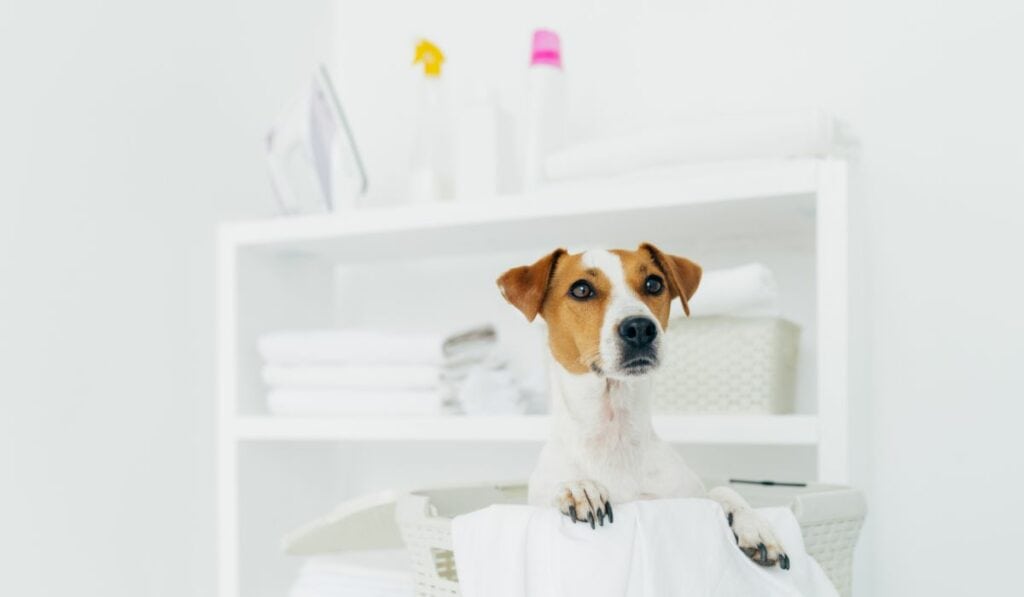
- Close Dryer and Washer Doors: Always keep the doors to your dryer and washer closed when not used. Dogs may be tempted to climb inside these appliances, posing severe risks of injury or entrapment.
- Secure Dryer Sheets: Store dryer sheets in a closed container placed high on a shelf. Dryer sheets contain chemicals that can be harmful if ingested, so keeping them out of reach is essential for your dog’s safety.
By following these dog-proofing tips, you can create a safer environment in your laundry room and minimize potential hazards for your furry friend. Remember to prioritize prevention by limiting your dog’s access to the laundry room when unsupervised.

Get the 7 Biggest Training Mistakes free report!
Reason For Dog-Proofing A Home
Dog-proofing your home is important to ensure the safety, health, and well-being of your canine companion. Here are key reasons why dog-proofing is essential:
Prevent Accidents
Dog-proofing your home helps minimize the risk of accidents and injuries for your dog. By removing potential hazards and securing dangerous items, you reduce the likelihood of your dog ingesting harmful substances, getting injured by sharp objects, or encountering other household dangers.
Protect Your Belongings
Dogs are naturally curious and playful, which can sometimes lead to damage to household items. Dog-proofing helps protect your furniture, belongings, and decor from being chewed, scratched, or knocked over by your dog.
Ensure Health And Wellness
Many everyday household items, plants, foods, and cleaning products are toxic to dogs if ingested. Dog-proofing involves removing or securing these items to prevent accidental poisoning.
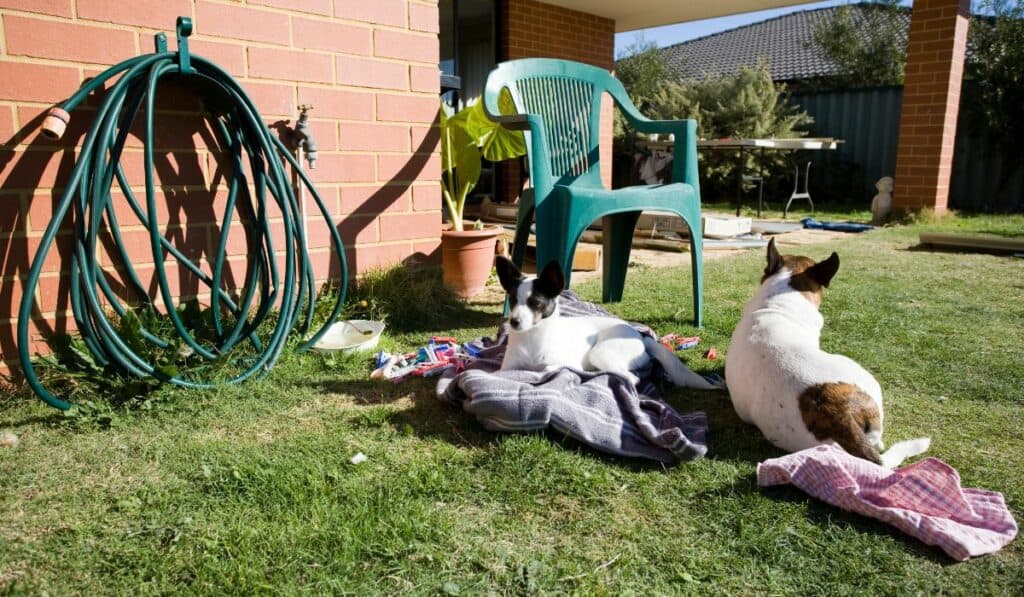
Create A Safe Environment
A safe and secure environment is crucial for your dog’s mental and emotional health. A well-dog-proofed house allows your dog to explore and roam freely without encountering potential dangers that could cause stress or anxiety.
Prevent Escape And Lost Pets
Dog-proofing outdoor areas, such as yards or fences, helps prevent escape routes and keeps your dog from wandering off or getting lost. This is especially important for dogs who may be tempted to explore beyond the confines of your property.
Peace of Mind
Dog-proofing your house gives you peace of mind, knowing that your dog is safe and secure in their environment. It allows you to relax and enjoy your time with your canine companion without constantly worrying about potential risks.
Overall, dog-proofing your house is a proactive and responsible way to create a safe and enjoyable living space for your dog. By taking the necessary precautions in making your home dog-friendly, you strengthen the bond with your pet and provide them with a happy and healthy life.
Conclusion
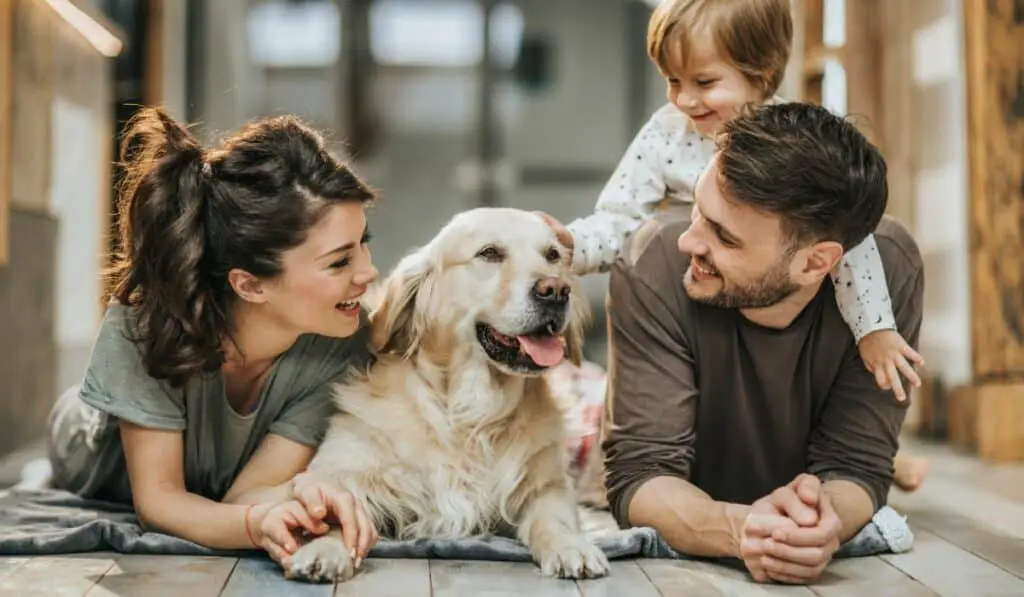
In conclusion, dog-proofing your home requires understanding the world from your dog’s perspective.Dogs are naturally curious and playful creatures, driven by instincts to chew, sniff, and explore their surroundings. By getting down to their level and identifying potential hazards from their viewpoint, you can effectively safeguard your home and prevent accidents that harm your beloved pet.
Taking the time to secure potential hazards will go a long way in creating a safe environment for your dog. Remember, your dog’s safety should be a top priority, so investing effort into dog-proofing your home is well worth it. By making these proactive changes, you’ll ensure a happier and healthier living space for you and your canine companion. Happy dog-proofing!
